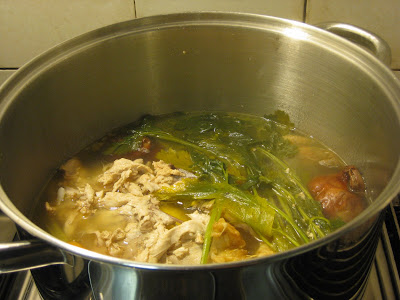My Mum recalled:
Together, my Aunt and Gran reminisced:When we were young Christmas day was not a holiday in Scotland as the Scots wanted their one day off to be New Year's Day - the day after Hogmanay (New Year's Eve). The house was thoroughly cleaned on Hogmanay - no self respecting Scot would go into a new year with dirt from the old year lurking around! Shortbread tins would be full, black bun was at the ready (black bun is a heavy fruit cake encased in a shortcrust pastry) and the whisky cupboard was well stocked!
Before midnight the floor would be swept again to make sure no dirt went into the new year and the ashes from the fire taken out and disposed of.After the stroke of midnight the men of the house gathered up their 'gifts': shortbread and perhaps a couple of kippers to ensure that the houses they went to would always have food in the coming year, a lump of coal to put on the fire - for warmth in the coming year and a bottle of whisky to pour ' a wee dram' for good luck in the coming year. The first man over the doorstep on New Year's Day was known as 'the first fit (foot)' and everyone wished to have a tall dark and handsome man as they brought the most luck to the house.
New Year's Day dinner was similar to what we now have at Christmas.
On the 31st of December, the house was cleaned. Beds were changed, all the washing and ironing was done and shortbread and blackbun were baked. Just before midnight we would check again that everything was clean, the dishes were all done and the place was tidy. Moments before midnight, your Grampa would take out the ashes from the grate below the open fire.
At the stroke of midnight, we would wish everyone present a “Happy New Year” with hugs, kisses and shaking of hands. Your Grampa would pour everyone a drink , traditionally this was whisky but other drinks were given if preferred and shortbread and blackbun would be eaten while everyone would drink to the New Year.
First Footing was done just after midnight to neighbours and friends to wish them “A Guid New Year”. To go “first footing” you took whisky, a piece of coal, a coin and some shortbread or blackbun with you to give the household you were visiting wealth, warmth, nourishment and happiness for the next twelve months. You always knocked on the door, even if you knew them well, so that you were invited in. The darkest haired person entered first as this was thought to bring good luck to the household and you handed over your gifts and had a drink with everyone present.
On New Year's Day, the whole family would gather at the parents’ house for lunch. Anyone visiting would, of course, bring the first footing items with them, and as each group arrived the darkest headed always entered first. You always knocked on the door on these occasions, even if it was your family home, and waited to be invited in!
Traditionally in our house we always had roast goose or duck on New Year's Day with all the trimmings.
I'm not so sure about all this cleaning on New Year's Eve - although I can see the reasoning behind it. If the house at least starts the year clean and tidy, there is some hope of that continuing into the New Year!
A tradition I'm more than happy to maintain in our own household however, is the baking of shortbread. As far as I'm concerned, the festive season is not complete until I've consumed at least a bit of homebaked Scottish shortbread.
There are a number of variation on shortbread recipes. I use a simple recipe which has been the standard in our family since well before my time.
The recipe makes four large rounds, which are shaped by hand, marked with a fork and scored by knife (ready to be broken into wedges when cooked).

They come out of the oven when they are golden and full of buttery promise and are sprinkled with caster sugar while they are still hot.

With a cupboard full of these, how could it fail to be a good New Year?
Wishing you all wealth, warmth, nourishment and happiness for 2009. May the year be full of coins, coal, kippers and whiskey.
(And just a little shortbread too.)
Scottish Shortbread
250g caster sugar
500g butter
750g plain flour
- Leave butter out to soften a little, then beat (I use an elecric mixer) with sugar until light and creamy.
- Add half of the flour and beat in.
- Remove from mixer, and add remainder of flour with a wooden spoon.
- Knead the mixture on a floured board until smooth.
- Shape into rounds and place on a baking tray lined with baking paper. Thumb press the edges, prick with a fork, and score into eighths.
- Bake cakes for up to an hour in a pre-heated 160C oven - watch until they are golden brown.
- Remove from oven and while still warm, sprinkle with caster sugar.
- When completely cool, store in an airtight container.










 Ingredients: 3 or 4 eggs, 3 teaspoonfuls salad oil*, 1 teaspoonful vinegar, pepper, salt.
Ingredients: 3 or 4 eggs, 3 teaspoonfuls salad oil*, 1 teaspoonful vinegar, pepper, salt. 

































